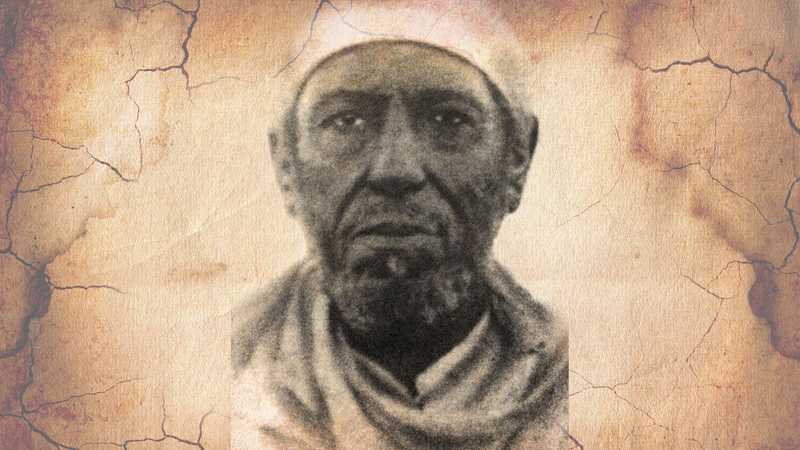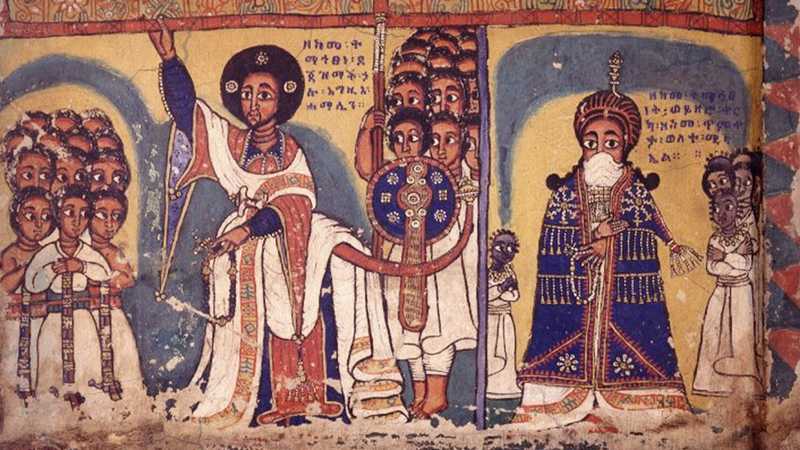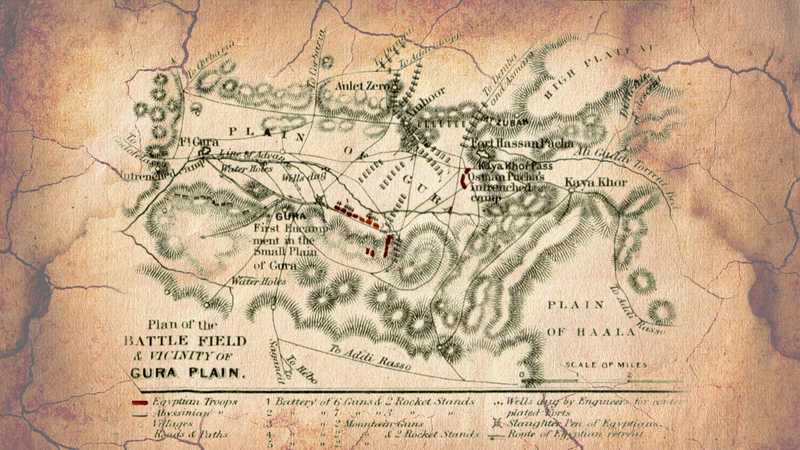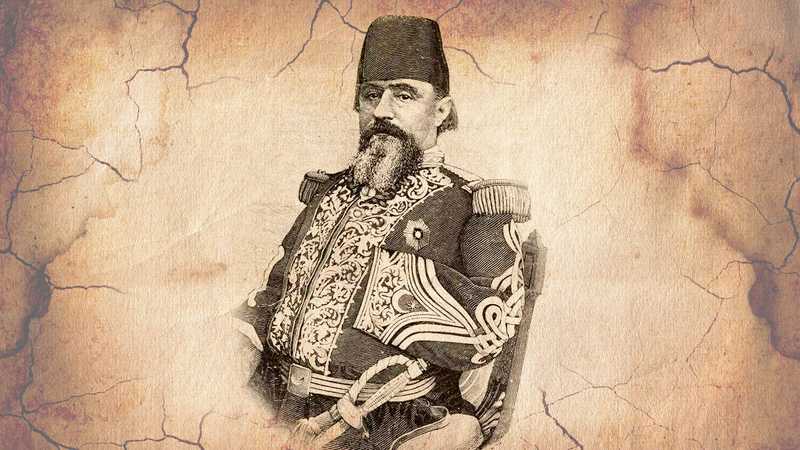The Battle of Gura’e
8 Mar, 1876 - 9 Mar, 1876
At the Battle of Gura'e, Egyptian fortress at Gura'e was attacked by the Abyssinian army under Emperor Yohannes IV.
 Gura’e, the site of one of two major Egyptian forts, was attacked by an Abyssinian army under Emperor Yohannes IV. The Egyptians were defeated by the overwhelming Abyssinian army.
Gura’e, the site of one of two major Egyptian forts, was attacked by an Abyssinian army under Emperor Yohannes IV. The Egyptians were defeated by the overwhelming Abyssinian army.
Raesi Woldemichael Solomon of Hazzegga (Eritrea) allied himself with the Egyptians in this battle to fight against the Abyssinian Emperor whom, he sensed, would not appoint him to rule over Mereb Mellash (mainly the Central Highlands of Eritrea). He suspected that his nemesis, Degiat Hailu Tewoldemedhin of Tsazzegga (Eritrea) would get the favor from the monarch.
 Raesi Woldemichael Solomon of Hazzegga
Raesi Woldemichael Solomon of Hazzegga
 Degiat Hailu Tewoldemedhin of Hazzega
Degiat Hailu Tewoldemedhin of Hazzega
Background
In the late 19th century, the Egyptian Khedivate’s ambitions to expand further inland into Mereb Mellash and then into Abyssinia brought them into direct conflict with the Ethiopian Empire, then ruled by Emperor Yohannes IV. The first major clash occurred in November 1875 at the Battle of Gundet, where the invading Egyptian army was soundly defeated by Yohannes’ forces.
Undeterred, the Egyptians mounted a second, much larger invasion attempt the following year in 1876. They established a forward base on the Gura’e plain, constructing two heavily garrisoned forts - The Fort of Gura’e manned by 7,500 troops under Ratib Pasha and ex-Confederate general William Wing Loring, and the Fort at Qeyih Kor with 5,500 men led by Uthman Rifqi.
Emperor Yohannes responded by mobilizing a massive army of over 50,000 men drawn from across his empire’s provinces of Tigray, Gojjam and Wollo. He strategically positioned his forces to threaten the Egyptian supply lines to their forts. With superior numbers and the element of surprise, Yohannes was poised to strike a decisive blow.
 Emperor Yohannes IV of Abyssinia
Emperor Yohannes IV of Abyssinia
The Battle Unfolds
On the morning of March 7, 1876, Ratib Pasha made a fateful decision. Fearing an Ethiopian assault on his vulnerable supply depots, he ordered 5,000 of his infantry to march out from the Fort of Gura’e and preemptively attack Yohannes’ army. Ratib and his advisor General Loring believed their entrenched artillery and modern weapons would prove decisive against the Ethiopians who lacked heavy guns.
Initially, the Egyptian commander Ratib Pasha intended to remain within the safety of the Gura’e fortress, but his American chief of staff Loring Pasha - the former Confederate Brig. Gen. William Loring - pushed him into a direct confrontation with the main Ethiopian force by crying “No! March out to them! You are afraid!”
 Map of the battlefield of Gura’e
Map of the battlefield of Gura’e
The Overwhelming Abyssinian Numbers
What the Egyptians did not realize was that Ethiopian scouts had detected their movements. Yohannes had prepared an ambush and his troops, the majority armed with rifles, quickly surrounded the outnumbered Egyptian brigade. The Ethiopians commanded the high ground, pouring enfilading fire onto the trapped enemy.
The American officer, William Wing Loring, described the desperate situation in his memoirs:
“We piled them up with our artillery by scores, but for every man shot, ten seemed to take his place…”
 U.S. Confederate Brig. Gen. William W Loring with an Ottoman Pasha regalia
U.S. Confederate Brig. Gen. William W Loring with an Ottoman Pasha regalia
The Egyptian infantry, most of whom were raw conscripts with minimal training, quickly lost cohesion under the withering fusillade. Entire regiments broke in panic. Officers trying to rally the men were swept up in the route. The soldiers’ unfamiliarity with the thorny acacia brush and rough terrain only compounded the chaos as they fled back towards the fort at Gura’e.
The Ethiopians seized the chance to slaughter the defenseless Egyptians. According to one account, out of the 5,000 men who left the fort that morning, only a few hundred made it back. The rest lay dead or dying on the Gura’e plain.
No Help from Qeyih Kor
Remarkably, the 5,500 strong Egyptian garrison at the Fort of Qeyih Kor under Uthman Rifqi remained in their defenses throughout the battle, mere spectators to the unfolding disaster. Their inaction sealed the defeat.
Yohannes pressed his advantage, laying siege to the fort at Gura’e over the next two days. The Egyptians attempted a counterattack on March 10 which was bloodily repulsed, costing the lives of senior commanders Rashid Pasha and Osman Bey Neghib. Thoroughly demoralized, the surviving defenders could only watch as the Ethiopians temporarily withdrew to loot the dead and gather the hundreds of abandoned Egyptian rifles and artillery pieces lost in the rout.
Massacres On Both Sides
In a disturbing postscript to the battle, the enraged Egyptians reportedly left their forts and burned alive the Ethiopian wounded left on the field. The Ethiopians retaliated by executing some 600 Egyptian prisoners they had taken, including senior officers.
The killing finally ceased on March 12 when the French consul at Massawa, Monsieur Sarzac, negotiated an amnesty. He toured the gruesome battlefield, arranging for the collection and evacuation of the Egyptian survivors back to Massawa by May.
Aftermath
News of the humiliating defeat was suppressed by the Egyptian government, fearing it could destabilize the Khedivate regime.
For Emperor Yohannes, the victory at Gura’e solidified his control over the Ethiopian Empire and the disputed Mereb Mellash region.
Raesi Woldemichael’s Stand
For Raesi Woldemichael Solomon of Hazzegga who wanted to rule over Mereb Mellash, having fought alongside the Egyptians, the Egyptian defeat meant he would lead the life of a rebel. It was clear that his cousin Degiat Hailu was favored by the emperor, so a truce was not an option for him either.
So he set out to build an army, to face off with Degiat Hailu of Tsazzegga. The emperor may have other ideas but to him, Hailu was the first in his way. This would lead to the Battle of Wekidiba a few months later, where he established himself as a formidable rebelling ruler the monarchy had to reckon with.
